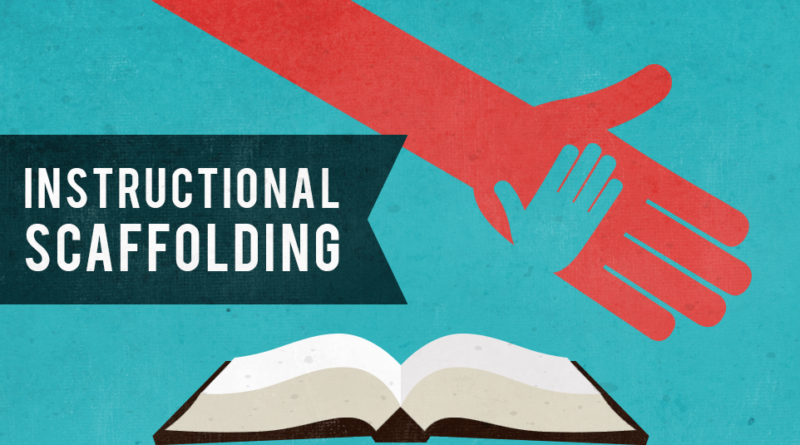Scaffolding in education. Vygotsky’s Theory of Cognitive Development: How Relationships Increase Learning
Scaffolding in education. Vygotsky’s Theory of Cognitive Development: How Relationships Increase Learning
Source: https://www.youtube.com/watch?v=8I2hrSRbmHE
#projectbasedlearning #englishlearning #instateachers #oposicion #oposito #learnenglish #storytime #knowledge #readingtime #roadtoyourpost #news #goldenopportunity #society #people #noticias #uk #usa #opositandoytrabajando #docente #docentes #oposicionesingles #empowerment #kids #children #education #teacherproblems #opogram
Scaffolding is not just a synonym for teacher´s help. It is a special kind of support that assists learners in acquiring new skills, abilities, knowledge and attitudes. This teaching strategy is more like the temporary assistance by which a teacher helps a learner know how to do something, so that the child feels able to accomplish a similar task, which in turn is indispensable to increase their learning autonomy.
Implementing scaffolding techniques requires identifying which principles are essential to support language development. Gibbons (2015) points out some illustrative hints:
Learners need to understand what is said to them and what they read. In Krashen´s terms, this can be understood as “comprehensible input”, which is not exactly “simplified language”, as suggested by Vygotsky.
Learners need to use the new language themselves. As experienced FL teachers know, the FL is much more memorable if it occurs in a meaningful context. In this regard, recent trends in the field of FLT highlight the development of problem-solving dialogue where small groups or pairs of learners solve a problem collaboratively.
Learners need opportunities to use “stretched” language. This means challenging them to move out of their comfort zone and struggle to get their meaning across. This shall obviously lead to admit error as an indispensable and natural factor in any learning process.
Learners need models of new language, especially the academic registers of school. These models should be varied and from different sources, so that they get familiar with different accents.
Learners need opportunities to build on the resources of their mother tongue (L1). Sometimes it is helpful to rely on the knowledge of our mother tongue to find linguistic similarities between L1 and the FL. Moreover, there is plenty of research on how strong students in their mother tongue are more likely to develop the necessary communicative abilities in the FL easier (Cummins 2000).
Second language learning is facilitated when students are using the new language to learn other things, such as subject content. Learning English in connection with other areas, or learning other areas through English (CLIL) has proven to be highly beneficial for children, since this approach creates natural and familiar contexts where the language is used in a hidden way.
In short, Learners need access to comprehensible input and models of new language across the curriculum, as well as opportunities for comprehensible output, stretched language, and using the resources of their other languages.
The eTwinning project is developed implementing cooperative learning strategies in which children work together to accomplish agreed common goals. This is taken to practice guiding children from LOTS (low order thinking skills) to HOTS, increasing the linguistic demands in a scaffolding spiral. Within cooperative tasks, individuals seek aims that are beneficial to themselves and to the group. Cooperative learning implies the instructional use of small groups, so that students cooperate to maximise their own potential through social interaction and use of technologies, amongst other benefits.
Creating optimal conditions for learning.
Carol Read (2007) developed the C-Wheel in order to help teachers develop optimal conditions for learning. Through this tool, she provides a flexible framework applicable to many different teaching and learning contexts; and she suggests that by adopting an approach in which we take account of the whole child, we are likely to be more effective and successful in our work as language teachers.
At the centre of the C-Wheel is the child including their social, psychological, physical and emotional needs and learning. These solid foundations are the starting point for everything we do in our classes. Around the centre of the wheel, there are eight segments showing key ingredients, all beginning with the letter ‘c’, which help us to work towards creating optimal conditions for learning.
In Carol Read´s words, “children don´t care how much you know, until they know how much you care”. These words entail a whole conception of the teaching action at early ages, in which the volitional factors play a key role, accepting that learning can be more productive and indeed it takes place more easily when there are positive attitudes. The C-Wheel considers:
••The role of the context in which children will carry out activities, which needs to be relevant and allow for discovery and construction of meaning.
••The learning coherence, ensuring that the sequence of activities range from simple to more complex and demanding.
••The development of the learners´ curiosity and sense of community, so that children feel challenged, but at the same time supported by the teacher, their peers and accepted by the learning community.
••Finally care, as children need to feel they are cared about as individuals. This shall be made concrete along our units in the way we support children while they are learning, scaffolding and using a positive, and caring language in classroom management.
Moreover, scaffolding language is understood in this FL programming as a special kind of support that assists learners in acquiring new skills, abilities, knowledge and attitudes. Gibbons (2015) (2015) points out some hints in this regard that deserve special attention.
Bibliography:
“Scaffolding Language, Scaffolding Learning. Teaching English Language Learners in the Mainstream Classroom”. Gibbons, P. Heinemann. 2017
Video by: usgovACF
More information about us:
facebook.com/OposicionesInglesRP/
Twitter: @OposIngles
https://twitter.com/OposIngles
Instagram: https://www.instagram.com/oposiciones_ingles
Video by Teachings in Education


